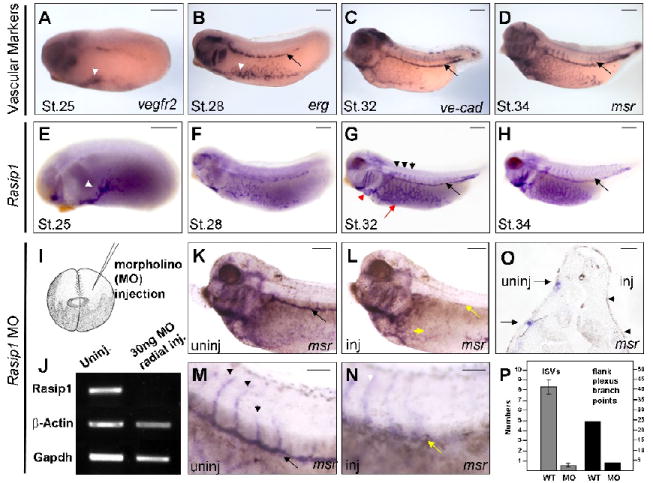Figure 5. Rasip1 knockdown in frog embryos results in failure of blood vessel formation.

Expression of Xenopus tropicalis Rasip1 transcripts in frog embryos by in situ hybridization marks the developing embryonic blood vessels (in all panels anterior is to the left). A-D) Vascular markers reveal the embryonic vasculature at stages indicated, including angioblasts (white arrowheads in A, B) and developing blood vessels, such as the posterior cardinal vein (black arrow, B-D). A) vegfr2; B) erg, vascular ETS factor; C) ve-cad, vascular endothelial cadherin; D) msr, vascular G-protein coupled receptor. E-H) Rasip1 initially marks scattered angioblasts (E, st.25), but progressively marks aggregating flank vessels (F, st.28). G) As vessels form, Rasip1 marks all embryonic frog vessels examined, including the flank plexus (red arrow), endocardium (red arrowhead), cardinal veins (black arrow) and ISVs (black arrowheads). H) Expression of Rasip1 declines slightly in vessels as they mature (including data not shown). I) Schematic of microinjection of Rasip1 morpholino injections into blastomeres of early cleavage stage embryo. J) Semi-quantitative RT-PCR shows the knockdown of Rasip1 transcript expression in radially injected embryos (24 cycles). (K-N) msr in situ hybridization of injected embryo, outlining vasculature on either uninjected (K,M) or injected (L,N) sides. K,M) Uninjected side of embryo displays major blood vessels, including the prominent cardinal vein (black arrow) and ISVs. M) Higher magnification of embryo in panel K, showing ISVs sprouting from the cardinal vein on the uninjected side (black arrowheads). L,N) MO injected side of embryos shows a severe reduction in vascular structures, including absence of cardinal vein (yellow arrow) and reduced plexus vessels (yellow arrowhead). N) Higher magnification of embryo in panel L, showing complete absence of both ISVs (white arrowhead) and cardinal vein (yellow arrow). Note that faint outline of ISVs in panel N results from ISVs from uninjected side appearing through the dorsal fin tissue (white arrowhead). O) Transverse sections through injected embryos show that cardinal veins and ISVs are lost on the injected side (arrowheads) but not the uninjected side (arrows). P) Quantification of observations in K-O. Total number of ISVs and flank plexus branch points were counted from the injected versus uninjected sides of MO-injected embryos. Y-axis for ISVs is to left; Y-axis for flank branch points is to right. The scale bars represent 250μm (A-H), 100μm (K, L), and 50μm (M, N, O), respectively.
